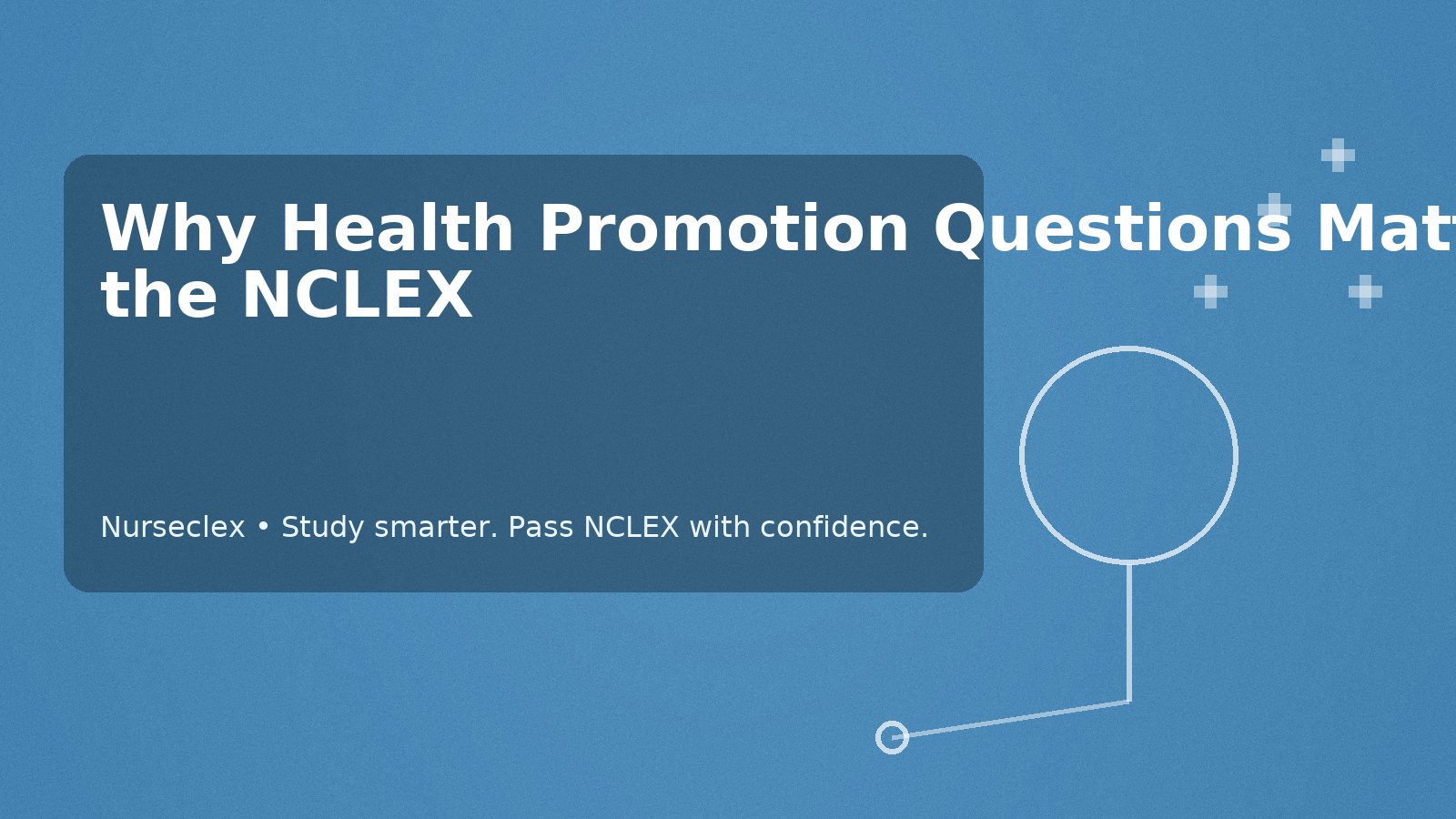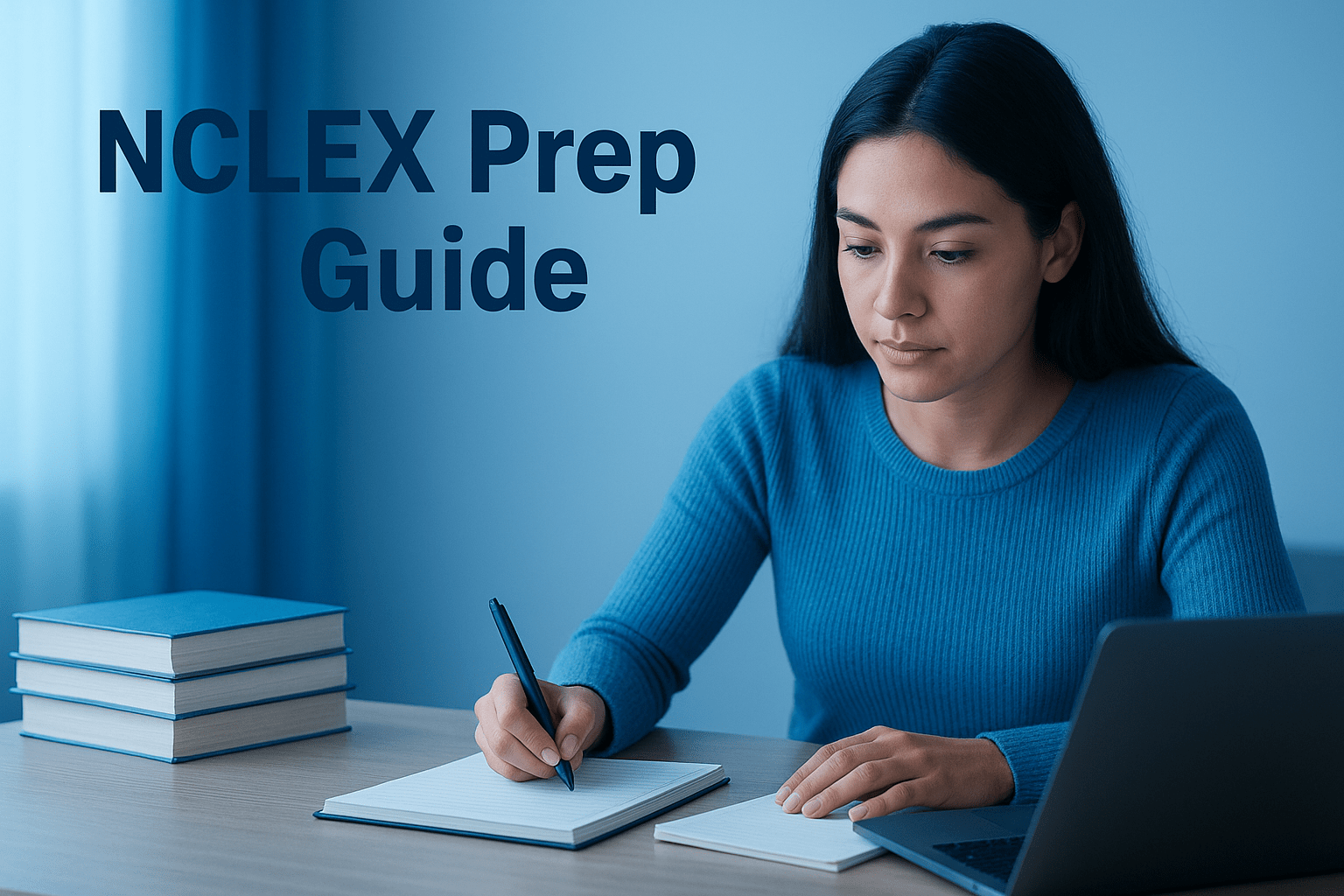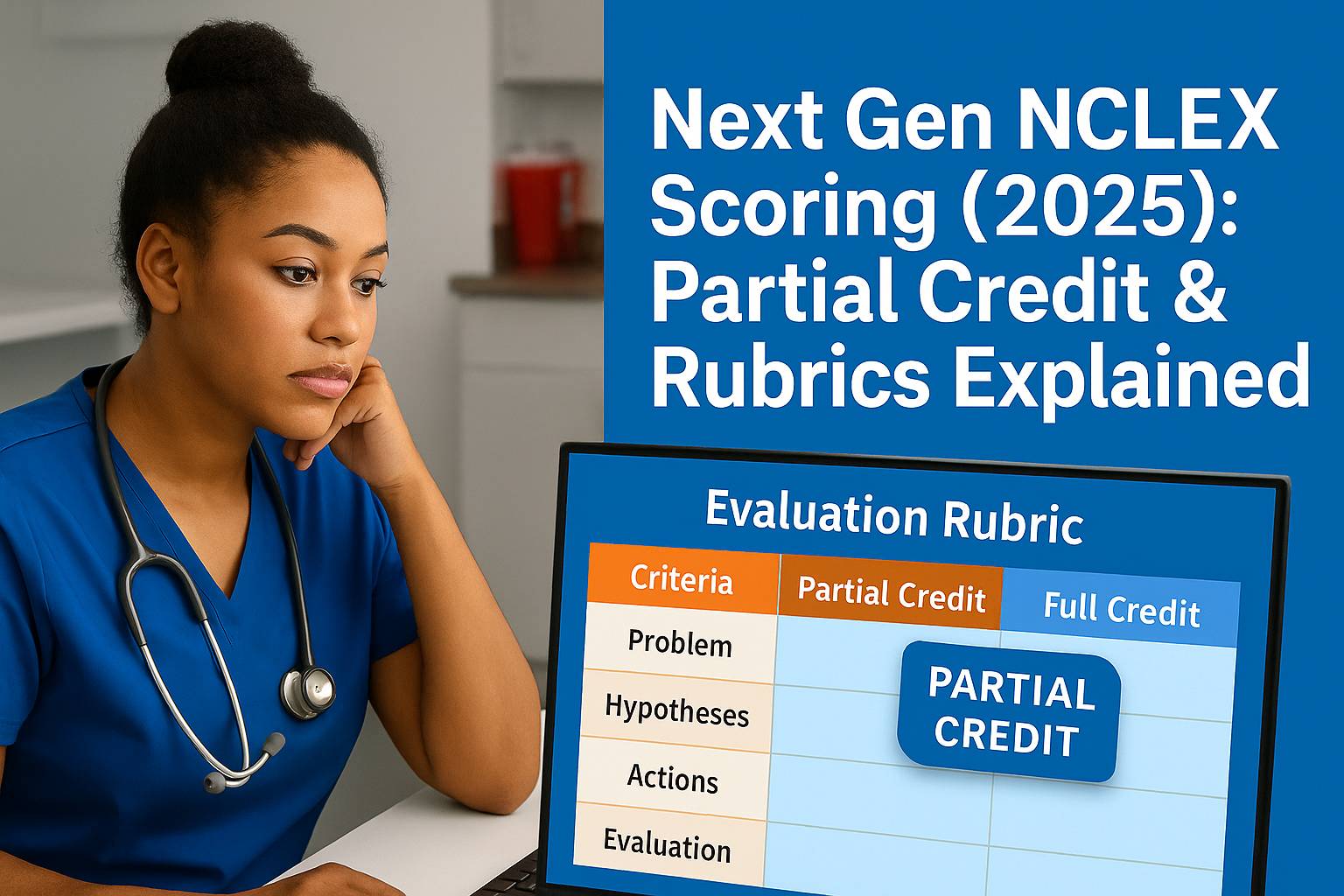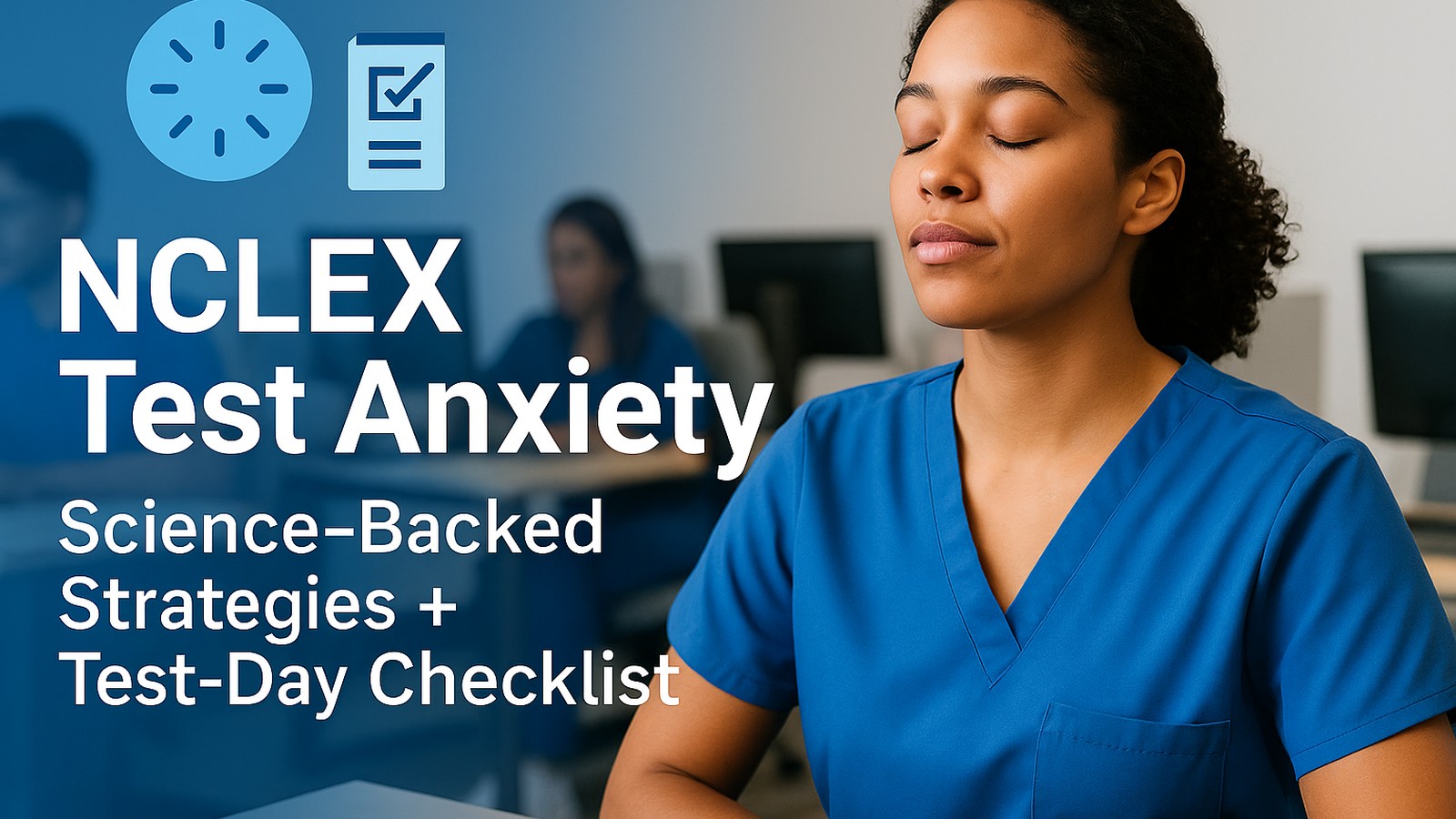Health promotion and maintenance is more than a test category. It is the day-to-day work of nursing. You use it to teach, prevent disease, and guide healthy choices. On the NCLEX, these questions check if you can protect patients before problems escalate. In practice, they help you keep people well at home—not just safe in the hospital.
This guide makes NCLEX Health Promotion and Maintenance simple: what’s tested, how to answer, and where to practice with Nurseclex.
Why NCLEX Health Promotion and Maintenance is a big deal
-
It appears across the test, woven into pediatrics, adult, maternal, psych, and community care.
-
It tests first action, therapeutic language, screening schedules, vaccinations, and lifestyle coaching.
-
Strong skills here improve outcomes, trust, and long-term wellness.
Practice right now:
-
NCLEX question bank (free sets): nurseclex.com/question-bank
-
Adaptive CAT simulation: nurseclex.com/cat-sim
-
Printable cheat sheets: nurseclex.com/cheat-sheets
Authoritative references (external):
-
CDC Immunization Schedules: cdc.gov/vaccines/schedules
-
USPSTF Preventive Screening Recommendations: uspreventiveservicestaskforce.org
-
NIH Tobacco Cessation Resources: smokefree.gov
Note: Policies can vary by facility and state. For exam prep, follow widely accepted national guidance and the logic of safety first.
1) Empowering Patients Through Education (core NCLEX skill)
What NCLEX tests
-
Do you teach in plain language?
-
Can you tailor education to age, culture, and literacy level?
-
Do you check understanding (teach-back) before discharge?
How to do it
-
Use short steps and everyday words.
-
Link actions to “why” (e.g., “This reduces infection risk”).
-
Confirm learning: “Can you show me how you’ll use the inhaler?”
Examples you’ll see
-
Teaching new parents about safe sleep (supine, firm surface, no soft bedding).
-
Coaching a patient with a new inhaler or insulin pen.
-
Explaining med timing (with food vs. empty stomach) and when to call the provider.
Practice: Try patient-education items at Nurseclex → nurseclex.com/question-bank
2) Disease Prevention: The Heart of Nursing Practice
What NCLEX tests
-
Recognize risk factors by age and condition.
-
Recommend screenings at correct intervals.
-
Teach vaccinations, hygiene, and injury prevention.
High-yield screenings (typical exam logic)
-
Breast cancer: Mammogram starting around age 40–50, every 1–2 years (follow national guidance noted in the stem).
-
Colorectal cancer: Screening ~45–75 (methods vary).
-
Cervical cancer: Pap/HPV testing at guideline intervals by age.
-
Lipid and diabetes screening: Based on risk and age—often adults with risk factors or periodic universal screening per guidance.
-
Bone density (DEXA): Often women ≥65 or younger with risk.
Vaccinations (adult basics)
-
Influenza annually.
-
Td/Tdap every 10 years; Tdap once as adult or during each pregnancy.
-
Zoster (recombinant) for older adults.
-
Pneumococcal for older adults and high-risk groups.
External references:
-
CDC schedules: cdc.gov/vaccines/schedules
Practice: Preventive-care drill sets → nurseclex.com/question-bank
3) Encouraging Healthy Behaviors for Long-Term Wellness
What NCLEX tests
-
Practical coaching for nutrition, exercise, sleep, stress, and mental health.
-
Motivational language that guides change (no shaming).
Behavior-change playbook
-
Start small: “Walk 10 minutes daily this week.”
-
Remove barriers: plan meals, set reminders, prep walking shoes at night.
-
Track wins: use a simple log or app; celebrate progress.
Smoking cessation example
-
Ask permission: “Can we talk about your smoking goals?”
-
Identify triggers; offer tools (NRT, apps, quitlines).
-
Set a quit date; plan follow-ups.
-
Resource: smokefree.gov
Practice: Lifestyle-coaching questions → nurseclex.com/question-bank
4) Preparing for Real-World Nursing Practice
Why this category is critical
-
Builds trust through clear communication.
-
Promotes wellness beyond discharge.
-
Reduces readmissions and long-term complications.
Bedside moves that map to NCLEX
-
Use teach-back before discharge.
-
Give written instructions in plain language.
-
Document what you taught, the patient’s response, and the follow-up plan.
Want a full study schedule?
Mini-Cases (how exam stems look)
Case 1: New parents
-
Question: Best first teaching about infant safety?
-
Best move: Back-to-sleep, firm mattress, room-sharing without bed-sharing, no soft bedding.
-
Why: Prevents SIDS and suffocation.
Case 2: Middle-aged adult at wellness visit
-
Question: Which screenings are due?
-
Best move: Use age-appropriate mammogram/colorectal guidance and risk-based lipid/diabetes checks.
Case 3: Patient with pre-hypertension
-
Question: Most effective initial intervention?
-
Best move: Lifestyle first—DASH diet, reduced sodium, regular activity, weight goals, limit alcohol; set measurable targets.
Practice these case styles:
Answering Strategy for Health Promotion Items
Use this quick 5-step filter:
-
Safety first: Any life-threat risk? If yes, stabilize before education.
-
Right fit: Is advice age-appropriate and culturally sensitive?
-
Actionable: Does the option give clear next steps?
-
Empowering: Does it invite participation (shared goals, teach-back)?
-
Evidence-based: Does it align with typical national guidance?
If two answers look good, pick the one that keeps the patient safest first or improves adherence with clear, simple steps.
Common Pitfalls (and fixes)
-
Too much jargon: Fix it—use short, concrete words.
-
Advice before listening: Fix it—assess readiness and ask open questions.
-
Unrealistic goals: Fix it—start small, schedule, and celebrate wins.
-
Ignoring literacy or culture: Fix it—adapt materials and involve family when appropriate.
-
No follow-up: Fix it—plan a check-in and document understanding.
High-Yield Checklist Before Exam Day
-
I can teach with plain language and teach-back.
-
I know adult vaccine basics and common screening ages.
-
I can coach diet, exercise, stress, and sleep with small goals.
-
I can spot unsafe advice and replace it with evidence-based steps.
-
I have done 10–15 Nurseclex health-promotion items per day this week.
Start a quick set now: nurseclex.com/question-bank
Conclusion
Health promotion questions are more than an NCLEX category—they are the heart of nursing. Focus on clear education, prevention, and sustainable behavior change. The more you practice, the more natural it feels on the exam and on the unit.
Next steps with Nurseclex
-
Free NCLEX health-promotion sets: nurseclex.com/question-bank
-
Adaptive CAT (mixes prevention with other categories): nurseclex.com/cat-sim
-
Related reading: Top 10 NCLEX Test-Taking Strategies







